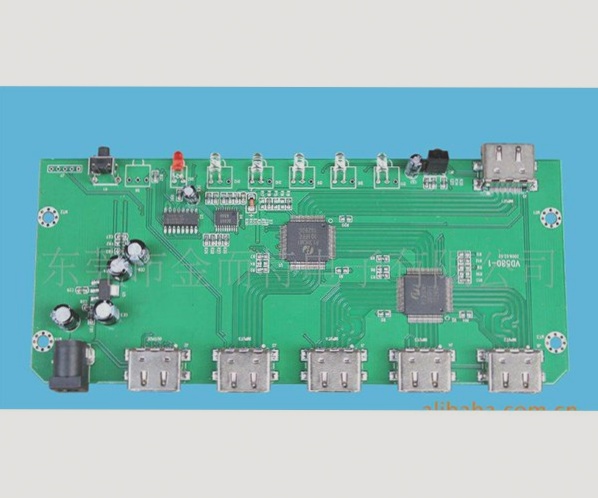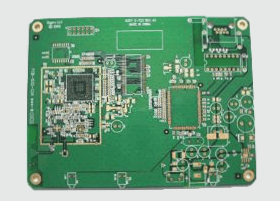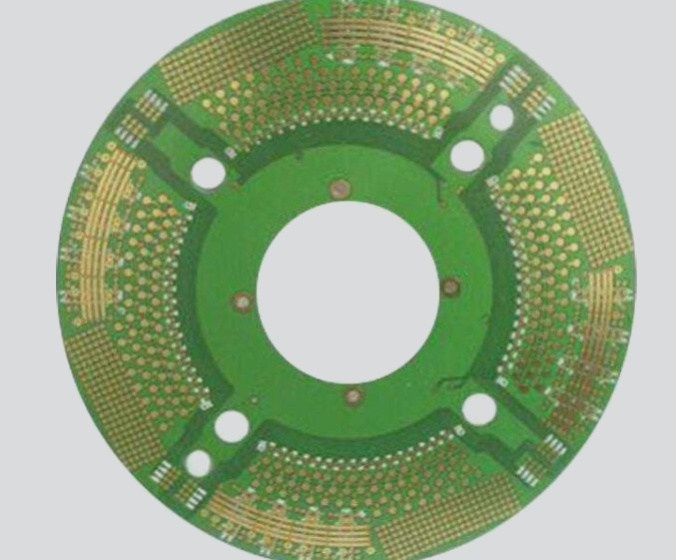Layout is one of the fundamental skills for PCB design engineers. The quality of routing directly impacts the overall system performance. Most high-speed design theories are ultimately realized and validated through the layout. Therefore, effective routing is crucial in high-speed PCB design. The following analysis focuses on the rationale behind routing decisions and provides optimized strategies for common scenarios encountered during actual layout. The discussion will cover three main aspects: right-angle routing, differential routing, and serpentine traces.
1. **Right-Angle Routing**
Right-angle routing is generally avoided in PCB design and has become a key criterion for evaluating routing quality. But how significant is the impact of right-angle routing on signal transmission? In principle, right-angle routing alters the width of the transmission line, leading to impedance discontinuities. In fact, not just right-angle turns, but also obtuse and acute angles in routing can cause similar impedance variations.
The impact of right-angle routing on signals is primarily observed in three ways:
1. First, the corner acts like a capacitive load on the transmission line, slowing down the rise time of the signal.
2. Second, the impedance discontinuity causes signal reflections.
3. Third, the sharp corners can generate electromagnetic interference (EMI).
The parasitic capacitance caused by a right-angle bend in the transmission line can be estimated using the following empirical formula:
**C = 61 * W * (Er)¹/² / Z₀**
Where:
– C is the equivalent capacitance of the corner (in picofarads, pF)
– W is the width of the trace (in inches)
– εᵣ is the relative permittivity (dielectric constant) of the PCB material
– Z₀ is the characteristic impedance of the transmission line.
For example, for a 4-mil wide 50-ohm transmission line (with εᵣ = 4.3), the capacitance introduced by a right-angle corner is approximately 0.0101 pF. The corresponding rise time change can be estimated as follows:
**T₁₀₋₉₀% = 2.2 * C * Z₀ / 2 = 2.2 * 0.0101 * 50 / 2 = 0.556 ps**

1. Through calculation, it can be observed that the capacitance effect caused by right-angle routing is negligible.
2. As the linewidth of the right-angle trace increases, the impedance decreases, which leads to some signal reflection. We can compute the equivalent impedance after increasing the linewidth using the impedance formula discussed in the transmission line section, and then calculate the reflection coefficient using the following empirical formula:
ρ = (Zs – Z0) / (Zs + Z0). Typically, the impedance change due to right-angle routing ranges from 7% to 20%, resulting in a maximum reflection coefficient of about 0.1. Furthermore, as shown in the figure below, the impedance of the transmission line briefly drops to its minimum value within a time interval of w/2, before returning to its normal impedance after another w/2 time. This impedance variation occurs very quickly, usually within 10 ps, which is a negligible effect for most signal transmissions.
3. Many people assume that right-angle routing is prone to electromagnetic wave radiation and EMI due to the sharp corners, which has led to the belief that right-angle routing should be avoided. However, results from numerous practical tests show that right-angle routing does not produce more significant EMI than straight traces. While current measurement instruments and test conditions may limit the precision of such tests, it is clear that the radiation from right-angle routing is smaller than the measurement error inherent in the instruments themselves.
4. In general, right-angle routing is not as problematic as often assumed. In fact, for applications operating below GHz, effects such as capacitance, reflection, and EMI are almost undetectable in TDR tests. High-speed PCB designers should focus on other critical aspects such as layout, power/ground design, trace routing, and via placement. Of course, while the impact of right-angle routing is not significant, this does not mean it should be used indiscriminately. Attention to detail remains a fundamental quality of every skilled engineer. Moreover, as digital circuit technology evolves rapidly, PCB engineers will increasingly work with signal frequencies that extend into the RF range above 10 GHz. In such cases, even small right-angle bends may become a significant concern for high-speed signal integrity.
5. **PCB Differential Routing**
6. Differential signaling is becoming increasingly common in high-speed circuit design. The most critical signals in circuits often employ a differential structure. What makes it so popular? How can we ensure its proper performance in PCB design? These are the two main questions we will address in the following discussion.
7. What is a differential signal? In simple terms, a driver generates two equal but inverted signals, and the receiver determines whether the logic state is “0” or “1” by comparing the voltage difference between the two signals. The pair of traces that carry these differential signals is called differential routing.
If your have any questions about PCB ,please contact me info@wellcircuits.com
1. **Right-Angle Routing**
Right-angle routing is generally avoided in PCB design and has become a key criterion for evaluating routing quality. But how significant is the impact of right-angle routing on signal transmission? In principle, right-angle routing alters the width of the transmission line, leading to impedance discontinuities. In fact, not just right-angle turns, but also obtuse and acute angles in routing can cause similar impedance variations.
The impact of right-angle routing on signals is primarily observed in three ways:
1. First, the corner acts like a capacitive load on the transmission line, slowing down the rise time of the signal.
2. Second, the impedance discontinuity causes signal reflections.
3. Third, the sharp corners can generate electromagnetic interference (EMI).
The parasitic capacitance caused by a right-angle bend in the transmission line can be estimated using the following empirical formula:
**C = 61 * W * (Er)¹/² / Z₀**
Where:
– C is the equivalent capacitance of the corner (in picofarads, pF)
– W is the width of the trace (in inches)
– εᵣ is the relative permittivity (dielectric constant) of the PCB material
– Z₀ is the characteristic impedance of the transmission line.
For example, for a 4-mil wide 50-ohm transmission line (with εᵣ = 4.3), the capacitance introduced by a right-angle corner is approximately 0.0101 pF. The corresponding rise time change can be estimated as follows:
**T₁₀₋₉₀% = 2.2 * C * Z₀ / 2 = 2.2 * 0.0101 * 50 / 2 = 0.556 ps**

1. Through calculation, it can be observed that the capacitance effect caused by right-angle routing is negligible.
2. As the linewidth of the right-angle trace increases, the impedance decreases, which leads to some signal reflection. We can compute the equivalent impedance after increasing the linewidth using the impedance formula discussed in the transmission line section, and then calculate the reflection coefficient using the following empirical formula:
ρ = (Zs – Z0) / (Zs + Z0). Typically, the impedance change due to right-angle routing ranges from 7% to 20%, resulting in a maximum reflection coefficient of about 0.1. Furthermore, as shown in the figure below, the impedance of the transmission line briefly drops to its minimum value within a time interval of w/2, before returning to its normal impedance after another w/2 time. This impedance variation occurs very quickly, usually within 10 ps, which is a negligible effect for most signal transmissions.
3. Many people assume that right-angle routing is prone to electromagnetic wave radiation and EMI due to the sharp corners, which has led to the belief that right-angle routing should be avoided. However, results from numerous practical tests show that right-angle routing does not produce more significant EMI than straight traces. While current measurement instruments and test conditions may limit the precision of such tests, it is clear that the radiation from right-angle routing is smaller than the measurement error inherent in the instruments themselves.
4. In general, right-angle routing is not as problematic as often assumed. In fact, for applications operating below GHz, effects such as capacitance, reflection, and EMI are almost undetectable in TDR tests. High-speed PCB designers should focus on other critical aspects such as layout, power/ground design, trace routing, and via placement. Of course, while the impact of right-angle routing is not significant, this does not mean it should be used indiscriminately. Attention to detail remains a fundamental quality of every skilled engineer. Moreover, as digital circuit technology evolves rapidly, PCB engineers will increasingly work with signal frequencies that extend into the RF range above 10 GHz. In such cases, even small right-angle bends may become a significant concern for high-speed signal integrity.
5. **PCB Differential Routing**
6. Differential signaling is becoming increasingly common in high-speed circuit design. The most critical signals in circuits often employ a differential structure. What makes it so popular? How can we ensure its proper performance in PCB design? These are the two main questions we will address in the following discussion.
7. What is a differential signal? In simple terms, a driver generates two equal but inverted signals, and the receiver determines whether the logic state is “0” or “1” by comparing the voltage difference between the two signals. The pair of traces that carry these differential signals is called differential routing.
If your have any questions about PCB ,please contact me info@wellcircuits.com




